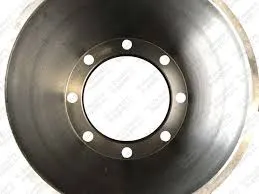
-
 Afrikaans
Afrikaans -
 Albanian
Albanian -
 Amharic
Amharic -
 Arabic
Arabic -
 Armenian
Armenian -
 Azerbaijani
Azerbaijani -
 Basque
Basque -
 Belarusian
Belarusian -
 Bengali
Bengali -
 Bosnian
Bosnian -
 Bulgarian
Bulgarian -
 Catalan
Catalan -
 Cebuano
Cebuano -
 Corsican
Corsican -
 Croatian
Croatian -
 Czech
Czech -
 Danish
Danish -
 Dutch
Dutch -
 English
English -
 Esperanto
Esperanto -
 Estonian
Estonian -
 Finnish
Finnish -
 French
French -
 Frisian
Frisian -
 Galician
Galician -
 Georgian
Georgian -
 German
German -
 Greek
Greek -
 Gujarati
Gujarati -
 Haitian Creole
Haitian Creole -
 hausa
hausa -
 hawaiian
hawaiian -
 Hebrew
Hebrew -
 Hindi
Hindi -
 Miao
Miao -
 Hungarian
Hungarian -
 Icelandic
Icelandic -
 igbo
igbo -
 Indonesian
Indonesian -
 irish
irish -
 Italian
Italian -
 Japanese
Japanese -
 Javanese
Javanese -
 Kannada
Kannada -
 kazakh
kazakh -
 Khmer
Khmer -
 Rwandese
Rwandese -
 Korean
Korean -
 Kurdish
Kurdish -
 Kyrgyz
Kyrgyz -
 Lao
Lao -
 Latin
Latin -
 Latvian
Latvian -
 Lithuanian
Lithuanian -
 Luxembourgish
Luxembourgish -
 Macedonian
Macedonian -
 Malgashi
Malgashi -
 Malay
Malay -
 Malayalam
Malayalam -
 Maltese
Maltese -
 Maori
Maori -
 Marathi
Marathi -
 Mongolian
Mongolian -
 Myanmar
Myanmar -
 Nepali
Nepali -
 Norwegian
Norwegian -
 Norwegian
Norwegian -
 Occitan
Occitan -
 Pashto
Pashto -
 Persian
Persian -
 Polish
Polish -
 Portuguese
Portuguese -
 Punjabi
Punjabi -
 Romanian
Romanian -
 Russian
Russian -
 Samoan
Samoan -
 Scottish Gaelic
Scottish Gaelic -
 Serbian
Serbian -
 Sesotho
Sesotho -
 Shona
Shona -
 Sindhi
Sindhi -
 Sinhala
Sinhala -
 Slovak
Slovak -
 Slovenian
Slovenian -
 Somali
Somali -
 Spanish
Spanish -
 Sundanese
Sundanese -
 Swahili
Swahili -
 Swedish
Swedish -
 Tagalog
Tagalog -
 Tajik
Tajik -
 Tamil
Tamil -
 Tatar
Tatar -
 Telugu
Telugu -
 Thai
Thai -
 Turkish
Turkish -
 Turkmen
Turkmen -
 Ukrainian
Ukrainian -
 Urdu
Urdu -
 Uighur
Uighur -
 Uzbek
Uzbek -
 Vietnamese
Vietnamese -
 Welsh
Welsh -
 Bantu
Bantu -
 Yiddish
Yiddish -
 Yoruba
Yoruba -
 Zulu
Zulu
how to switch from drum brakes to disc
Switching from drum brakes to disc brakes can significantly enhance your vehicle's braking performance, safety, and overall driving experience. While drum brakes have been a long-standing staple in many vehicles, disc brakes offer numerous advantages, including better heat dissipation, improved stopping power, and reduced brake fade. Here’s a comprehensive guide on how to make the switch.
1. Understanding the Differences Before embarking on the conversion, it’s important to understand how disc and drum brakes function. Drum brakes use a set of shoes that expand against the inside of a drum to create friction. In contrast, disc brakes utilize a rotor that is squeezed by brake pads, offering more efficient heat dissipation. This results in more consistent braking performance, especially under high-stress conditions.
2. Gather Necessary Parts and Tools To convert to disc brakes, you’ll need specific parts, which may vary depending on your vehicle make and model. Generally, you will require - Disc brake rotors - Brake calipers - Brake pads - Brake lines - Mounting brackets - A master cylinder (if the existing one is not compatible) - Tools (wrenches, socket set, jack stands, etc.)
3. Prepare Your Vehicle Before starting the conversion, ensure your vehicle is securely lifted using jack stands. Remove the wheels to access the brake components.
4. Remove Drum Brakes Carefully take off the drum brakes. This typically involves removing the wheel hub and unbolting the drum assembly. Keep track of all components and fasteners for easier reassembly if needed.
how to switch from drum brakes to disc

5. Install Disc Brake Components Begin by mounting the new disc brake brackets. Securely attach the brake calipers to these brackets and ensure the correct alignment with the rotors. Once the calipers are in place, insert the new rotors and attach the appropriate brake pads into the calipers.
6. Upgrade Brake Lines If your vehicle’s existing brake lines are not compatible with the new calipers, it’s essential to replace them. Use new, high-quality brake lines that can withstand the hydraulic pressure. Make sure to bleed the system to remove any air.
7. Install a New Master Cylinder In some cases, you may need to replace the master cylinder to accommodate the increased fluid requirements of disc brakes. Follow manufacturer instructions for installation and ensure correct fluid levels.
8. Test and Adjust After completing the installation, double-check all components for tightness and ensure that the brake system is properly bled. Perform a test drive in a safe area, gradually increasing speed to test the brakes. Take time to familiarize yourself with the new braking dynamics.
Conclusion Switching from drum brakes to disc brakes can significantly improve your vehicle's performance and safety. While the process requires careful planning and execution, the benefits of enhanced braking power and reliability are well worth the effort. Always consult professional mechanics if you're uncertain about any steps in the conversion process.
-
What Are Drum BrakesNewsJul.07,2025
-
Understanding Brake Drum MaterialNewsJul.07,2025
-
Semi-Trailer Brake Drum: A Key Component for Extreme Loads and Long-Distance TransportNewsJul.07,2025
-
Drum Brake Pads for SaleNewsJul.07,2025
-
Brake Drums for SaleNewsJul.07,2025
-
Brake Drum ManufacturerNewsJul.07,2025
-
Aluminum Brake Drums: The Future of High-Performance CarsNewsJul.07,2025
